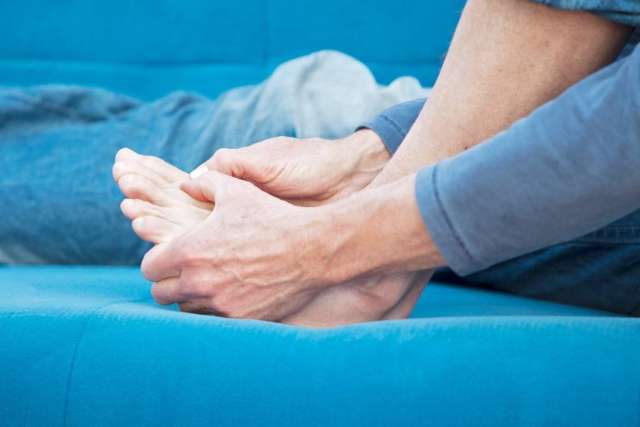Dear Doctor: I’ve been diagnosed with osteoporosis, and I currently have stress fractures in my feet. It’s been five months, and they still haven’t healed. I’m on a bone-building medicine and a med to prevent calcium loss in the urine. What could be preventing my bones from healing?
Dear Reader: Let’s start with a recap of osteoporosis. Our bodies are constantly absorbing and replacing bone tissue. This occurs at a precise rate calibrated to keep the honeycomb structure within the bones as strong as possible. When that fine-tuned balance becomes disrupted so that either too much bone is removed or not enough bone is replaced, the result is a disease known as osteoporosis.
Bone mass and density decrease, and the natural gaps and holes within in the honeycomb structure become visibly larger. That makes the bones of someone with osteoporosis inherently weaker, which leaves them more prone to injury. This is particularly true of the spine, hips, wrists, forearms and feet, which are the most common sites of osteoporosis fracture. When you consider how much we ask of the weight-bearing bones in our feet as we walk, run, hop and jump our way through daily activities and exercise, it’s not surprising that they are vulnerable to developing stress fractures.
Unlike a complete fracture, which goes through the bone and leaves it in two pieces, a stress fracture is a hairline crack in the bone’s outer structure. It can also arise from severe bruising within a bone. Although this is a less extreme injury than the through-and-through break of a complete fracture, you’re still dealing with the need to heal the area and to re-grow bone.

Very soon after a fracture occurs, a protective blood clot forms at the site of the break. A few days later, a soft band of cartilage and other tissue begins to form around the break. This acts as the initial platform from which the subsequent stages of bone repair will take place. In the final phase, known as remodeling, solid bone replaces the interim spongy bone. No matter how mild or severe the fracture that has been sustained, the new bone that is required to heal the break will grow at the same rate. That’s typically six to eight weeks.
Although the initial pain of your injury has likely abated, it’s important to understand that healing is still taking place. When someone has osteoporosis, this can be a slower and much more gradual process. If you’ve been asked to wear a special boot, keep doing so. In addition to the medications you have been prescribed to help rebalance the process of remodeling, concentrate on getting adequate calcium. It’s estimated that up to 90% of women fail to get the recommended 1,200 mg of daily calcium they need. It’s available in supplements, of course, but we urge you to get at least half the amount from food. Vitamin D3 is also important to bone health. For adults over the age of 50, the recommended amount is 800 to 1,000 international units (IU) of vitamin D3 per day.
(Send your questions to [email protected], or write: Ask the Doctors, c/o UCLA Health Sciences Media Relations, 10960 Wilshire Blvd., Suite 1955, Los Angeles, CA 90025. Owing to the volume of mail, personal replies cannot be provided.)





